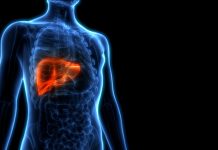
International Osteoporosis Foundation President Professor Cyrus Cooper speaks with HEQ about the risk and burden of osteoporosis.
Professor Cyrus Cooper interview by Rosemary Lobley.
The International Osteoporosis Foundation (IOF), the world’s largest NGO dedicated to osteoporosis and musculoskeletal conditions, aims to drive the prevention, treatment and early diagnosis of osteoporosis and related diseases through research, collaboration, and raising awareness.
IOF President Professor Cyrus Cooper speaks with HEQ about the risk and burden of osteoporosis.
What is the significance of early diagnosis in treating and relieving the burden of osteoporosis?
Osteoporosis is a condition in which bones become progressively weak and fragile. This leads to a high risk of debilitating bone fractures which can occur following a minor impact such as a fall from standing height, or even from bending to pick up a grocery bag. In Europe, osteoporosis-related fractures affect up to one in two women and one in five men aged 50 years and over.
As a ‘hidden’ and painless chronic disease osteoporosis remains vastly under-diagnosed and under-treated. According to a recent IOF study of six European countries, the treatment gap in postmenopausal women at high risk ranges from 49% (UK) to 85% (France). Even after a fragility fracture has already occurred, approximately 80% of patients are not assessed or treated for the underlying condition. This is in stark contrast to cardiovascular disease prevention, where patients are routinely treated for high blood pressure or cholesterol to avoid potential strokes or heart attacks.
Osteoporosis-related fractures account for high healthcare spending across Europe. Approximately 3.5 million osteoporosis-related fragility fractures occur in the EU each year, which cost an estimated €37.5bn: around 3% of overall healthcare costs. With the projected ageing of Europe’s populations, unless fracture prevention is prioritised, fracture-related costs are predicted to increase by 27% from 2017 to 2030, to approximately €47.4bn. The socio-economic cost extends to the burden on family-caregivers and to the need for long-term nursing care. In Europe, the proportion of patients moving into long-term care facilities after hip fracture ranges up to 35.3% for patients aged above 90 years. And, although osteoporosis largely affects people of retirement age, a significant number of adults in the workforce are also affected. In 2017, sick days taken by non-retired individuals in just six EU countries totalled more than 7.6 million days.
Osteoporotic fractures often have a devastating, irreversible impact on patients’ lives. In the EU, the current fracture-related disability-adjusted life years (DALYs) per 1,000 individuals age 50 years or above are estimated at 21 years, which is higher than the estimates for stroke or chronic obstructive pulmonary disease. In the first year after a hip fracture, mortality rates rise to between 20% and 24%; and the loss of function and independence among survivors is profound, with 40% unable to walk independently and 60% requiring assistance. Because of these losses, 33% are totally dependent or in a nursing home in the year following the fracture.
A significant problem is that a first fracture signals a very high risk for recurring fractures, with risk highest in the following two years. If not diagnosed and treated for osteoporosis (the underlying disease) a patient has no protection against a possible cycle of recurring fractures which often lead to a downward spiral of pain, disability and loss of independence.
What are the key risk factors in osteoporosis? What preventive or protective measures can be taken to lessen the risk of the disease?
Osteoporosis is most common in adults aged over 50, with women about four times more likely to develop it than men. Aside from age, sex and ethnicity, key non-modifiable risk factors include a parental history of osteoporosis or hip fracture, thin build (low body mass index), early menopause before the age of 45, rheumatoid arthritis, longstanding immobility, celiac or inflammatory bowel disease; insulin-dependent diabetes and a history of an overactive thyroid gland, among others. Certain medications, such as cancer treatments or steroids increase risk as well, as do tobacco use and excessive drinking.
Physical activity and bone-healthy nutrition, including sufficient calcium, protein and vitamin D, play a role in building strong bones in youth and in maintaining strong bones in adulthood. At the public health level, health authorities can play an important role in education and promotion of healthy lifestyle to reduce risk at all stages of life.
Early recognition of risk factors is essential so that action can be taken before a first or recurrent fracture occurs. The International Osteoporosis Foundation (IOF) provides an online risk check in 36 languages to alert individuals to their risk factors. At the professional level, IOF also works closely with other disease areas to disseminate information and best-practice guidance for diagnosis and treatment to general practitioners, orthopaedists, or clinicians who specialise in osteoporosis risk-associated disorders such as diabetes, cancer or kidney disease.
How can digital solutions help with the screening and treatment of osteoporosis?
Currently, one of the most important and widely used digital resources in the field is the Fracture Risk Assessment Tool (FRAX®). FRAX, with more than 70 country-specific models, is freely accessible online and is also integrated in many bone densitometry scanners. The algorithm helps clinicians identify a patient’s 10-year risk of major osteoporotic fracture based on input of clinical risk factors, with or without bone density values. The output then helps the physician stratify a patient’s risk and informs management decisions, in accordance with national treatment guidelines. The use of FRAX has an enormous potential to improve patient management in countries with limited availability of expensive bone density scanning technology, and indeed during this COVID-19 pandemic when access to routine diagnostic testing is often restricted.
Overall, the use of data and digital solutions can certainly help improve and facilitate osteoporosis prevention and care. Healthcare policy can potentially support the use of digital solutions to enhance the sharing of routine health statistics, by standardising integrated care pathways and electronic health records, and by facilitating delivery of patient care such as exercise or falls prevention programmes. At the research level there is increased interest in artificial intelligence applications both to model the risk of fragility fracture, and to help with the identification and segmentation of diagnostic imaging.
What are the key benefits of post-fracture care co-ordination programmes, also known as Fracture Liaison Services, for patients who have or may have osteoporosis? Should high-risk patients presenting with fractures be screened for osteoporosis as a matter of course?
A fragility fracture – a broken bone resulting from a minor impact – in someone aged 50 years or over indicates an urgent need for post-fracture care including osteoporosis treatment. Without management, a patient is at high risk of sustaining further, potentially debilitating fractures. Currently, there is an enormous and unacceptable treatment gap, with a minority of patients who have fractured being identified and treated. This is clearly shown by the fact that over 55% of patients who sustain a costly, life-threatening hip fracture have evidence of a prior vertebral fracture – which was likely undiagnosed and untreated.
Post-fracture care (PFC) co-ordination programmes such as Fracture Liaison Services are the best way to ensure that any patient who presents to a hospital with a fragility fracture is routinely identified, assessed, and treated for osteoporosis, the underlying cause of the fracture. PFC programmes have proven benefits and have been shown to be cost saving for healthcare systems through fewer recurrent fractures and fewer secondary care admissions.
By supporting the widespread implementation of post fracture care co-ordination services IOF aims to reduce by 2025 the incidence of hip and spine fractures attributable to osteoporosis by approximately 25%. To this end, IOF is working closely with experts from Oxford University on a dedicated, five-pillar programme called the Capture the Fracture® Partnership. This global initiative provides validated resources and quality frameworks, works to encourage policy makers to establish post fracture care services within their national healthcare systems, and provides recognition, training and mentorship to established and prospective PFC programmes. Among other key outputs it is also developing an interactive benefit calculator which will allow physicians and healthcare providers to optimise secondary prevention services in their own national healthcare systems.
With ageing populations and lifestyle changes projected to cause significant increases in osteoporosis and related fractures in the future, what should be done at a policy level to ameliorate the burden of osteoporosis on patients and the healthcare system as a whole?
Due to changes in population demographics, the number of men and women with osteoporosis in the EU is expected to rise from 27.5 million in 2010 to 33.9 million in 2025, representing an increase of 23%. To alleviate the health economic burden, and the pain, suffering and loss of independence associated with fragility fractures, osteoporosis must be tackled in a three-pronged policy approach.
First, as discussed above, co-ordinated systems of secondary fracture prevention must be implemented in hospitals throughout Europe to ensure that patients who have sustained an osteoporosis-related fracture are identified and receive systematic, high-quality post-fracture care and follow-up to prevent recurrent fractures.
Health authorities must also focus on primary prevention in the broader population at risk. Osteoporosis is too often incorrectly assumed to be a natural part of ageing, rather than a preventable disease. With widespread use of FRAX to screen for those at high risk, improved public and healthcare professional awareness, and best practice guidance for medical care providers, much can be done to ensure that individuals at risk are identified and managed before a fracture occurs.
Finally, prevention over the whole life course, which begins in pregnancy, should be considered a public health priority. From promotion of exercise programmes for all-ages groups to ensuring sufficient vitamin D levels and calcium intake within the population, policy action can be taken to help Europeans set a solid foundation for good bone health and osteoporosis prevention.
Cyrus Cooper is Professor of Rheumatology and Director of the MRC Lifecourse Epidemiology Unit, University of Southampton and Professor of Musculoskeletal Science at the Nuffield Department of Orthopaedics, Rheumatology and Musculoskeletal Sciences, University of Oxford.
Professor Cyrus Cooper
President
International Osteoporosis Foundation
www.osteoporosis.foundation
This article is from issue 16 of Health Europa. Click here to get your free subscription today.






















